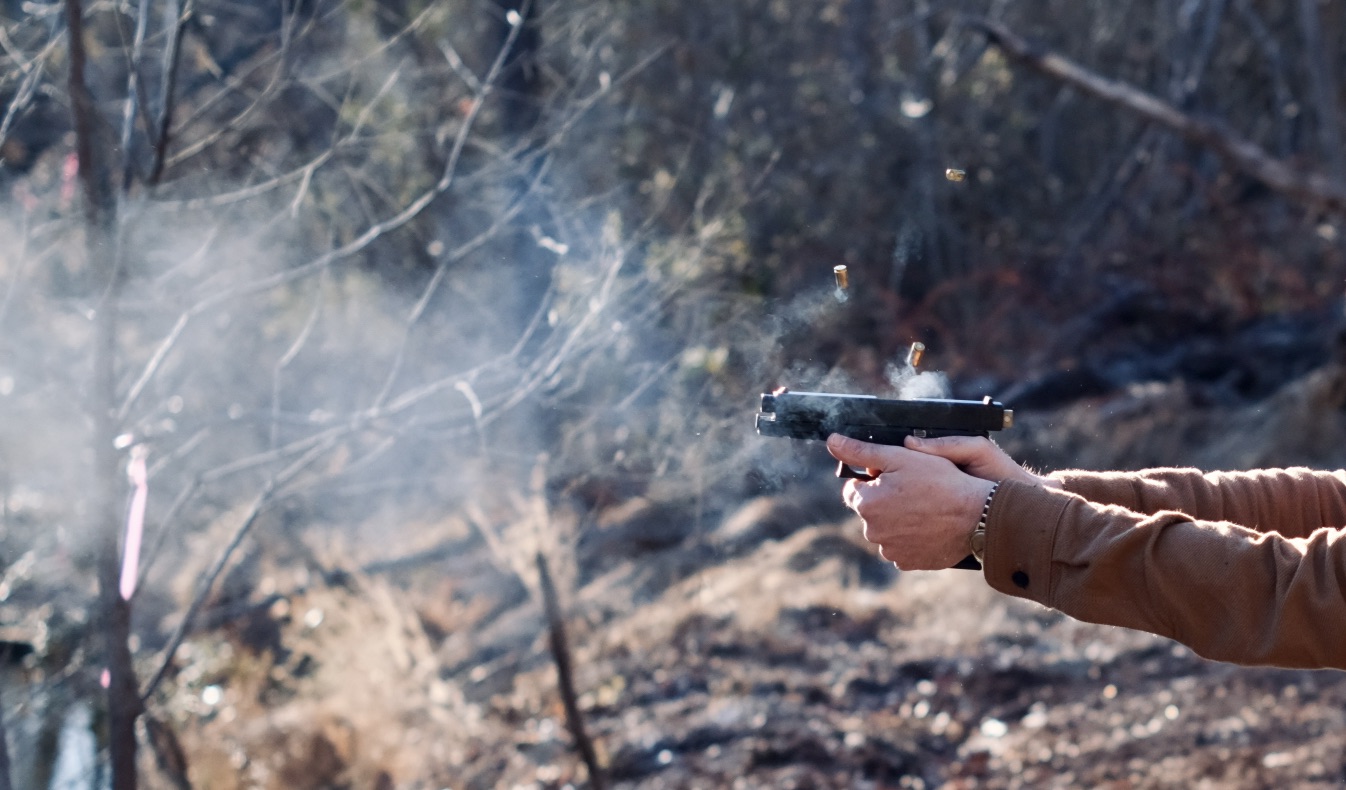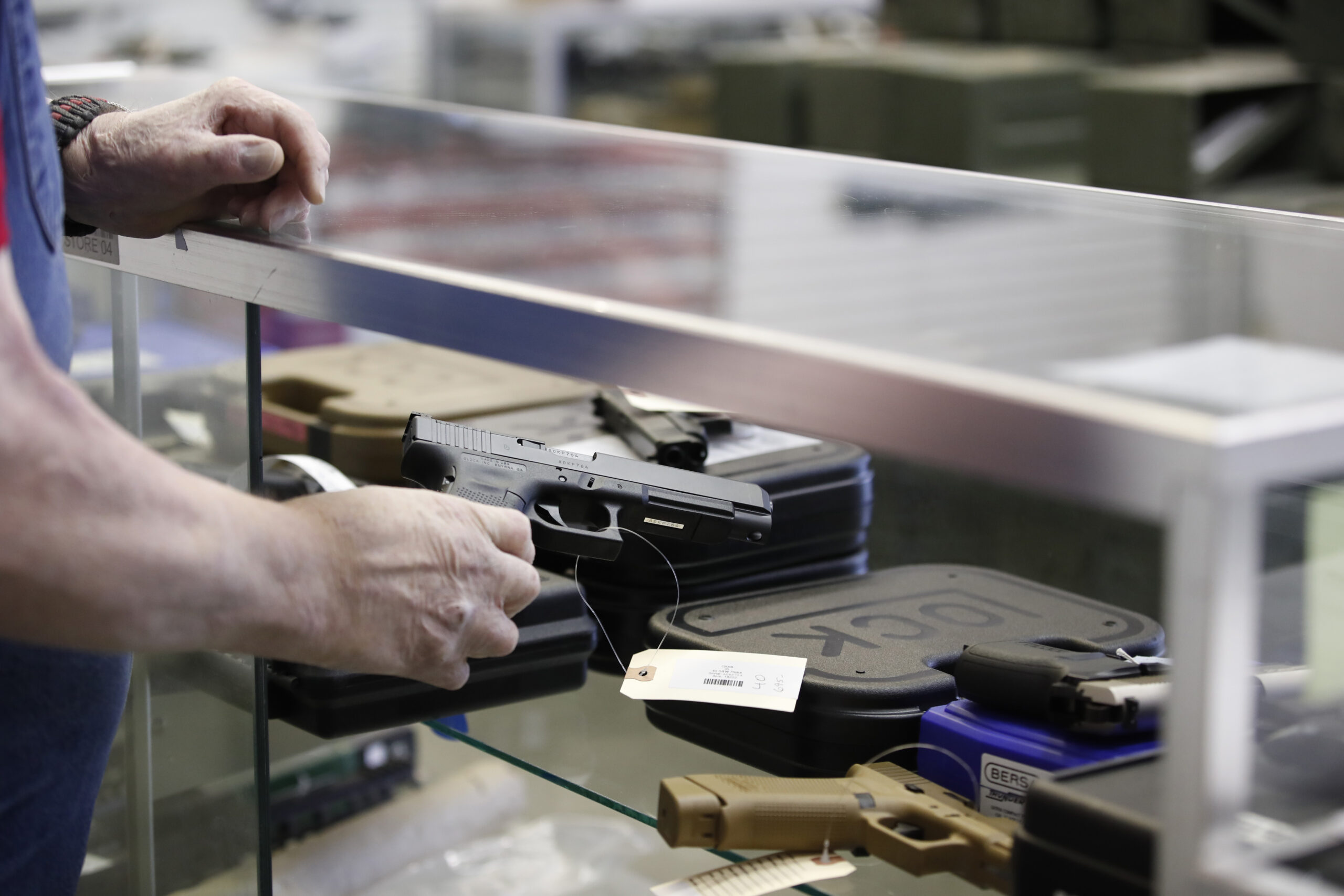Steven Dettelbach, the director of the Bureau of Alcohol, Tobacco, Firearms and Explosives, is calling for immediate action to address a surge in crimes involving auto sears, small devices that enable semiautomatic weapons to fire like machine guns.
“This is a problem that needs to be focused on immediately,” Dettelbach said. “These devices are flooding our communities.”
Speaking virtually to the audience of a February 28 gun violence prevention forum in New York City, Dettelbach cited a recent ATF report that found a shocking increase in recoveries of auto sears and other machine gun conversion devices. From 2017 through 2021, the agency recovered 5,454 such devices, a 570 percent increase over the previous five-year period.
The data backs up last year’s reporting from The Trace and VICE News, which found that auto sears were involved in dozens of shootings by extremists, mass shooters, and drug traffickers. In April 2022, after a gunman armed with a converted Glock handgun opened fire in Sacramento leaving six dead and 12 wounded, a group of more than 40 members of Congress signed a letter urging the ATF to be more explicit about the illegality of the devices.
Machine guns are among the most regulated firearms in the United States. Federal law requires anyone who wishes to purchase a machine gun to go through rigorous screening and register the weapon with the government. And gunmakers have been prohibited from selling new machine guns to civilians for decades, which means the weapons command huge premiums among enthusiasts because of their rarity.
But in recent years, auto sears, also known as Glock switches, have made the machine gun accessible again. The small conversion devices are easily installed on semiautomatic firearms, cheap to purchase, and difficult for law enforcement to detect.
“Congress knew almost 100 years ago, in the days of Al Capone, that fully automatic weapons were unusually dangerous to the public and law enforcement,” Dettelbach said. “They have no place in our communities.” Unlike a semiautomatic gun, which fires one cartridge with each trigger pull, a fully automatic weapon can fire up to 20 rounds per second until the trigger is released or it runs out of ammo.
“Let me be clear: Making, selling, and just having these kinds of machine gun conversion devices is against the law,” he added.
Dettelbach, who was nominated by President Joe Biden and later confirmed by the Senate last year, is the first confirmed director of the ATF in nearly a decade. He did not lay out a specific plan to address the surge in conversion devices in his comments. But he said the bureau is “using every tool at its disposal to help prevent and respond to gun violence.”
The ATF’s National Firearms Commerce and Trafficking Assessment report, which was published on February 1, is the first comprehensive accounting on crime guns in more than 20 years from the federal agency charged with enforcing the nation’s gun laws. The report recommended the agency provide more training to federal, international, state, and local law enforcement agencies on how to identify, intercept, and submit tracing requests on machine gun conversion devices. It also suggested that the agency beef up its own capability to trace the devices and enter into an intelligence partnership with the U.S. Customs and Border Patrol to monitor for illegal imports.
The Trace and VICE News’ reporting found that auto sears and other machine gun conversion devices cost as little as $20, are frequently sold online, and are usually imported from other countries, largely from China.
However, many U.S.-based firearm manufacturers, which the ATF is charged with regulating, are aware that many of their guns are easy to convert. Glock switches have become so popular that unwitting customers have mailed them to the company’s headquarters for repairs. So far, the ATF has not publicly outlined a plan to require manufacturers to guard against conversion devices.
The forum in New York City, organized by Northwell Health, New York’s largest hospital system, focused heavily on health care providers’ role in addressing gun violence, from assessing patients’ risk of firearm injury to offering resources to parents on safe firearm storage.
“It’s an extraordinarily complicated and multifaceted issue, but all of the components of it intertwine and are interconnected,” said Michael Dowling, the president and CEO of Northwell Health. “This is a public health issue.”
The forum spotlighted a growing movement among health systems across the country to more directly address gun violence, especially gun violence affecting children. Last year, new research found that gun violence is the leading cause of death for children. Meanwhile, the Biden administration is investing hundreds of millions in new funding from the Bipartisan Safer Communities and recent budget bills to support new gun violence research, encourage states to pass new and improve existing red flag laws, and bolster alternatives to traditional law enforcement.
The Department of Justice recently awarded $100 million in grants to community-based violence intervention and prevention programs, many of which work directly with hospitals to address retaliatory gun violence.
“Change is needed because the level of gun violence in this country is simply unacceptable,” Dettelbach said. “We at the ATF refuse to accept it as some sort of status quo that will persist in the future. We refuse to accept the notion that it’s somehow who we are as Americans. It is not. It is distinctly un-American. The ATF is a small agency with a big task, and our success hinges on our partnerships for that reason.”
While Dettelbach said the ATF’s role is as a law enforcement agency, he referred to gun violence as a public health crisis that requires a comprehensive solution that goes beyond law enforcement.
“The public health impact of gun violence is devastating,” he said. “I applaud you all for taking on these tough questions because gun violence is not just a law enforcement problem. It is a public health problem.”


